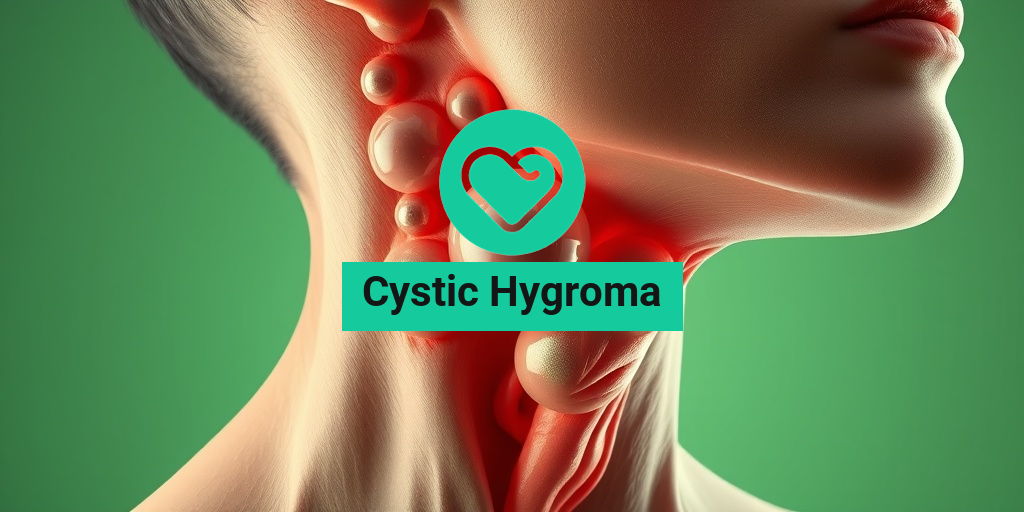What Is Motor Neuron Disease?
Motor Neuron Disease (MND) is a progressive neurological condition that affects the motor neurons in the brain and spinal cord. These neurons are responsible for controlling voluntary muscle movements, which means that when they degenerate, the ability to move, speak, swallow, and breathe can be severely impacted. MND is often referred to as Amyotrophic Lateral Sclerosis (ALS) in some regions, particularly in the United States, but it encompasses a range of disorders that affect motor neurons.
Types of Motor Neuron Disease
There are several types of motor neuron disease, each with its own characteristics and progression:
- Amyotrophic Lateral Sclerosis (ALS): The most common form, characterized by muscle weakness and atrophy.
- Progressive Muscular Atrophy (PMA): Affects the lower motor neurons, leading to muscle wasting.
- Primary Lateral Sclerosis (PLS): Affects the upper motor neurons, causing stiffness and weakness.
- Progressive Bulbar Palsy (PBP): Primarily affects the muscles involved in speech and swallowing.
Understanding these types is crucial for diagnosis and treatment, as each type may require different management strategies. If you suspect you or a loved one may be experiencing symptoms of MND, it’s essential to consult a healthcare professional for a thorough evaluation.
Causes and Risk Factors
The exact cause of motor neuron disease remains largely unknown, but several factors may contribute to its development:
- Genetics: A small percentage of cases are hereditary, with mutations in specific genes linked to MND.
- Environmental Factors: Exposure to certain toxins, heavy metals, and even physical trauma may increase risk.
- Age and Gender: MND is more common in individuals over the age of 40 and tends to affect men more than women.
Research is ongoing to better understand the underlying mechanisms of MND, and resources like Yesil Health AI can provide valuable insights into the latest findings and evidence-based health answers.
Motor Neuron Disease Symptoms
The symptoms of motor neuron disease can vary significantly from person to person, depending on the type and progression of the disease. However, there are some common early signs that individuals and their families should be aware of:
Early Symptoms
- Muscle Weakness: This may start in one limb and gradually spread to other areas of the body.
- Muscle Cramps and Twitches: Involuntary contractions can be an early indicator of MND.
- Difficulty with Fine Motor Skills: Tasks such as buttoning a shirt or writing may become challenging.
- Speech Changes: Slurred speech or difficulty articulating words can occur as the disease progresses.
Progressive Symptoms
As motor neuron disease advances, symptoms can become more severe and may include:
- Difficulty Swallowing: This can lead to choking or aspiration pneumonia.
- Respiratory Issues: Weakness in the muscles that control breathing can lead to respiratory failure.
- Emotional Changes: Individuals may experience mood swings, depression, or anxiety as they cope with the disease.
Recognizing these symptoms early can lead to timely intervention and support. If you or someone you know is experiencing these signs, it’s crucial to seek medical advice promptly.
Conclusion
Motor neuron disease is a complex and challenging condition that requires a comprehensive approach to management. Understanding the types, causes, and symptoms is essential for patients and caregivers alike. For more information and support, consider visiting Yesil Health AI, where you can find evidence-based answers to your health questions. Remember, early detection and intervention can make a significant difference in the quality of life for those affected by MND. 🌟

Types of Motor Neuron Disease
Motor Neuron Disease (MND) is a group of progressive neurological disorders that affect the motor neurons in the brain and spinal cord. These diseases lead to muscle weakness and atrophy, impacting mobility and daily activities. Understanding the different types of MND is crucial for diagnosis and management. Here are the primary types:
Amyotrophic Lateral Sclerosis (ALS)
Amyotrophic Lateral Sclerosis, commonly known as ALS, is perhaps the most well-known type of motor neuron disease. It affects both upper and lower motor neurons, leading to muscle weakness, twitching, and eventual paralysis. Symptoms often begin with muscle cramps and weakness in the hands or feet, gradually progressing to difficulty in speaking, swallowing, and breathing. ALS is often associated with a genetic component, but environmental factors may also play a role.
Progressive Bulbar Palsy (PBP)
Progressive Bulbar Palsy primarily affects the bulbar muscles, which control speech, swallowing, and facial movements. Individuals with PBP may experience slurred speech, difficulty swallowing, and emotional lability. This type of MND can occur alone or in conjunction with ALS, and it primarily affects older adults.
Primary Lateral Sclerosis (PLS)
Primary Lateral Sclerosis is characterized by the degeneration of upper motor neurons. Unlike ALS, PLS does not typically affect lower motor neurons, which means that while muscle weakness and stiffness occur, muscle wasting is less common. Symptoms may include difficulty with balance and coordination, as well as spasticity in the limbs. PLS progresses more slowly than ALS and has a better prognosis.
Progressive Muscular Atrophy (PMA)
Progressive Muscular Atrophy affects lower motor neurons, leading to muscle weakness and atrophy. Symptoms often begin in the hands and feet, gradually spreading to other parts of the body. PMA can be challenging to diagnose, as it may initially resemble other conditions. While it progresses more slowly than ALS, it can still significantly impact quality of life.
Familial vs. Sporadic MND
Motor Neuron Disease can be classified into two categories: familial and sporadic. Familial MND is inherited and accounts for about 5-10% of cases, often linked to specific genetic mutations. Sporadic MND, on the other hand, occurs without a family history and is the more common form. Understanding these distinctions is vital for treatment and genetic counseling.
Causes and Risk Factors
The exact causes of Motor Neuron Disease remain largely unknown, but several factors may contribute to its development. Understanding these causes and risk factors can help in early detection and management.
Genetic Factors
Genetics play a significant role in some cases of MND. Mutations in specific genes, such as SOD1, C9orf72, and FUS, have been linked to familial forms of the disease. Genetic testing can help identify individuals at risk, especially in families with a history of MND.
Environmental Factors
Research suggests that environmental factors may also contribute to the onset of MND. Potential risk factors include:
- Exposure to toxins: Chemicals such as pesticides and heavy metals may increase the risk.
- Occupational hazards: Certain professions, particularly those involving manual labor, may have a higher incidence of MND.
- Smoking: Tobacco use has been associated with an increased risk of developing MND.
Age and Gender
Age is a significant risk factor for MND, with most cases occurring in individuals aged 40 and older. Additionally, men are more likely to develop MND than women, although the reasons for this disparity are not fully understood.
Other Health Conditions
Individuals with certain health conditions may be at a higher risk for developing Motor Neuron Disease. These conditions include:
- Traumatic brain injury: Previous head injuries may increase the risk of MND.
- Neurodegenerative diseases: Conditions like Parkinson’s disease and multiple sclerosis may share common pathways with MND.
While the causes of Motor Neuron Disease are complex and multifactorial, understanding these risk factors can aid in early diagnosis and intervention, ultimately improving the quality of life for those affected. 🌟

Diagnosis of Motor Neuron Disease
Diagnosing Motor Neuron Disease (MND) can be a complex process, as the symptoms often mimic those of other neurological disorders. Early diagnosis is crucial for effective management and improving the quality of life for patients. Here’s a closer look at how MND is diagnosed.
Understanding the Symptoms
The initial symptoms of motor neuron disease can vary widely among individuals. Common early signs include:
- Muscle weakness: This may start in the hands or feet, making it difficult to perform everyday tasks.
- Muscle cramps and twitching: These involuntary movements can be a sign of nerve damage.
- Speech difficulties: Patients may experience slurred speech or difficulty swallowing.
- Fatigue: A general sense of tiredness that doesn’t improve with rest.
Recognizing these symptoms early can lead to a quicker diagnosis, which is essential for managing the disease effectively.
Diagnostic Tests and Procedures
To diagnose motor neuron disease, healthcare professionals typically employ a combination of the following tests:
- Neurological Examination: A thorough examination to assess muscle strength, coordination, and reflexes.
- Electromyography (EMG): This test measures the electrical activity of muscles and can help identify nerve damage.
- Nerve Conduction Studies: These tests evaluate how well electrical signals travel through the nerves.
- Magnetic Resonance Imaging (MRI): An MRI can help rule out other conditions that may mimic MND symptoms.
- Blood Tests: These can help exclude other diseases and check for genetic markers associated with MND.
It’s important to note that there is no single test that can definitively diagnose motor neuron disease. Instead, doctors rely on a combination of clinical evaluations and diagnostic tests to arrive at a conclusion.
Consultation with Specialists
Patients suspected of having MND are often referred to specialists, such as neurologists, who have experience in diagnosing and treating this complex condition. A multidisciplinary approach may also involve physiotherapists, occupational therapists, and speech therapists to address the various challenges faced by patients.
Motor Neuron Disease Treatment Options
While there is currently no cure for Motor Neuron Disease, various treatment options can help manage symptoms and improve the quality of life for those affected. The treatment plan is often tailored to the individual’s specific needs and may include a combination of therapies.
Medications
Several medications can help manage symptoms of MND:
- Riluzole: This medication is known to slow the progression of the disease and extend survival in some patients.
- Edaravone: Another drug that may help slow the decline in physical function.
- Pain Management: Medications such as analgesics can help manage pain associated with muscle cramps and spasms.
Physical and Occupational Therapy
Physical therapy plays a crucial role in maintaining mobility and function. Therapists can design personalized exercise programs to help strengthen muscles and improve coordination. Occupational therapy focuses on helping patients adapt to daily activities, ensuring they maintain independence for as long as possible.
Nutritional Support
As MND progresses, patients may experience difficulty swallowing, which can lead to nutritional deficiencies. A dietitian can provide guidance on:
- High-calorie diets: To ensure adequate nutrition.
- Texture-modified foods: Easier to swallow options to prevent choking.
- Feeding tubes: In advanced stages, a feeding tube may be necessary to ensure proper nutrition.
Speech and Communication Therapy
As speech difficulties arise, speech therapists can assist patients in finding alternative communication methods. This may include:
- Augmentative and Alternative Communication (AAC): Devices or apps that help patients communicate effectively.
- Speech exercises: Techniques to improve clarity and articulation.
Supportive Care
Supportive care is vital for enhancing the quality of life for individuals with motor neuron disease. This includes:
- Palliative care: Focused on providing relief from symptoms and stress.
- Psychological support: Counseling and support groups can help patients and families cope with the emotional aspects of the disease.
In conclusion, while the diagnosis and treatment of motor neuron disease can be challenging, a comprehensive approach involving various healthcare professionals can significantly improve the quality of life for those affected. 🌟

Living with Motor Neuron Disease
Motor Neuron Disease (MND) is a progressive neurological condition that affects the motor neurons in the brain and spinal cord. Living with MND can be challenging, not only for those diagnosed but also for their families and caregivers. Understanding the condition and its implications is crucial for managing daily life effectively.
Understanding the Symptoms
The early symptoms of motor neuron disease can be subtle and may vary from person to person. Common early signs include:
- Muscle Weakness: This may start in one limb and gradually spread to others.
- Difficulty Speaking: Some individuals may notice slurred speech or difficulty articulating words.
- Swallowing Problems: Difficulty swallowing can lead to choking or aspiration.
- Muscle Cramps and Twitches: These can be uncomfortable and may occur frequently.
As the disease progresses, individuals may experience more severe symptoms, including paralysis and respiratory difficulties. It’s essential to recognize these changes early and seek appropriate medical advice.
Daily Life Adjustments
Living with MND requires significant adjustments to daily routines. Here are some strategies that can help:
- Assistive Devices: Tools like wheelchairs, speech-generating devices, and modified utensils can enhance independence.
- Home Modifications: Simple changes, such as installing grab bars or ramps, can make a home more accessible.
- Nutrition Management: Working with a dietitian can help manage swallowing difficulties and ensure adequate nutrition.
- Emotional Support: Joining support groups or seeking counseling can provide emotional relief and connection with others facing similar challenges.
Support Systems
Having a strong support system is vital for individuals living with motor neuron disease. Family, friends, and healthcare professionals play crucial roles in providing care and emotional support. Consider the following:
- Caregiver Support: Caregivers often face their own challenges; providing them with resources and respite care can be beneficial.
- Community Resources: Organizations like the Motor Neurone Disease Association offer resources, information, and support networks.
- Healthcare Team: Regular consultations with neurologists, physiotherapists, and occupational therapists can help manage symptoms effectively.
Research and Future Directions
Research into motor neuron disease is ongoing, with scientists and medical professionals striving to understand the condition better and develop effective treatments. Here are some promising areas of research:
Genetic Studies
Understanding the genetic factors associated with motor neuron disease is crucial. Some forms of MND have a hereditary component, and researchers are exploring the genes involved. This research could lead to:
- Targeted Therapies: Identifying specific genetic mutations may allow for personalized treatment plans.
- Preventive Strategies: Understanding genetic predispositions could lead to early interventions for at-risk individuals.
Stem Cell Research
Stem cell therapy is a promising area of research that aims to repair or replace damaged motor neurons. While still in the experimental stages, this approach could potentially:
- Regenerate Neurons: Stem cells may help regenerate damaged motor neurons, improving function.
- Slow Disease Progression: Early studies suggest that stem cell treatments could slow the progression of MND.
Clinical Trials
Numerous clinical trials are underway to test new drugs and therapies for motor neuron disease. Participating in clinical trials can provide access to cutting-edge treatments and contribute to valuable research. Some areas of focus include:
- Neuroprotective Agents: These aim to protect motor neurons from degeneration.
- Symptomatic Treatments: Research is ongoing to find medications that can alleviate symptoms and improve quality of life.
As research continues to evolve, there is hope for better management strategies and potential breakthroughs in the treatment of motor neuron disease. Staying informed and connected with healthcare providers can help individuals navigate this journey with greater confidence and support. 🌟

Frequently Asked Questions about Motor Neuron Disease
What is Motor Neuron Disease?
Motor Neuron Disease (MND) is a group of progressive neurological disorders that affect the motor neurons in the brain and spinal cord. These neurons are responsible for controlling voluntary muscle movements, and their degeneration leads to muscle weakness and atrophy.
What are the early symptoms of Motor Neuron Disease?
Early symptoms of motor neuron disease can vary, but common signs include:
- Muscle weakness or stiffness
- Twitching muscles (fasciculations)
- Difficulty with speech or swallowing
- Fatigue
- Changes in handwriting
What are the different types of Motor Neuron Disease?
There are several types of motor neuron disease, including:
- Amyotrophic Lateral Sclerosis (ALS)
- Progressive Bulbar Palsy (PBP)
- Primary Lateral Sclerosis (PLS)
- Progressive Muscular Atrophy (PMA)
Is Motor Neuron Disease genetic?
While most cases of motor neuron disease are sporadic, about 5-10% of cases are familial, meaning they can run in families. Genetic mutations have been identified in some familial cases, but the exact cause of the disease remains largely unknown.
How is Motor Neuron Disease diagnosed?
Diagnosis of motor neuron disease typically involves a combination of:
- Clinical examination
- Electromyography (EMG)
- Nerve conduction studies
- Magnetic resonance imaging (MRI)
These tests help to rule out other conditions and confirm the diagnosis.
What is the prognosis for someone with Motor Neuron Disease?
The prognosis for individuals with motor neuron disease varies widely. While some may experience a rapid progression of symptoms, others may live for many years with the disease. Supportive care and symptom management can significantly improve quality of life.
Where can I find support for Motor Neuron Disease?
Support for individuals with motor neuron disease and their families can be found through various organizations, such as:
- Motor Neurone Disease Association
- Local support groups
- Online forums and communities
These resources can provide valuable information, emotional support, and practical assistance.
Can lifestyle changes help manage Motor Neuron Disease symptoms?
While there is no cure for motor neuron disease, certain lifestyle changes may help manage symptoms. These can include:
- Regular physical therapy
- Healthy diet
- Staying socially active
- Using assistive devices as needed
Consulting with healthcare professionals can provide tailored recommendations.
What is the difference between Motor Neuron Disease and ALS?
Amyotrophic Lateral Sclerosis (ALS) is a specific type of motor neuron disease. While all forms of MND involve the degeneration of motor neurons, ALS is the most common and well-known type, characterized by both upper and lower motor neuron involvement.




